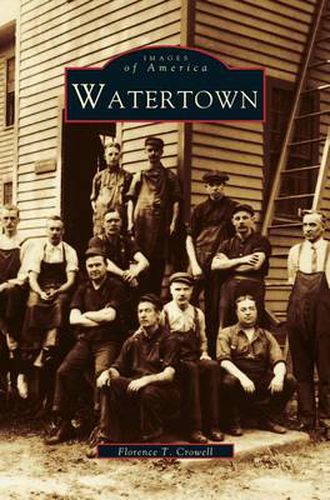Readings Newsletter
Become a Readings Member to make your shopping experience even easier.
Sign in or sign up for free!
You’re not far away from qualifying for FREE standard shipping within Australia
You’ve qualified for FREE standard shipping within Australia
The cart is loading…






This title is printed to order. This book may have been self-published. If so, we cannot guarantee the quality of the content. In the main most books will have gone through the editing process however some may not. We therefore suggest that you be aware of this before ordering this book. If in doubt check either the author or publisher’s details as we are unable to accept any returns unless they are faulty. Please contact us if you have any questions.
Here, in stunning images and stirring narrative, is the history of Watertown, a community that lies near the center of western Connecticut. The town was once part of Mattatuck, a tract of land purchased from the Paugasett Indians in 1684. The fertile area first attracted Farmington residents, who settled down to farm the land. It was not until 1722, however, that the first sawmill was built. In time, new settlers joined the earlier families and, by 1739, they formed the parish of Westbury, which in turn was incorporated as Watertown in 1780. With more than two hundred unforgettable pictures, Watertown highlights the local men and women, buildings and churches, and neighborhoods and businesses that are the essential element of the town’s lively history. It shows some of the nine one-room schoolhouses that children attended. It features the Taft School, a preparatory school for boys opened by Horace Taft in 1893; Mrs. Parke and her strange museum; and tavern keeper and farmer James Bishop. It proudly displays some of the firsts for Watertown: Merrit Heminway winding thread on spools, Wheeler-Wilson developing the lock-stitch sewing machine, and the Watertown Manufacturing Company designing and producing Lifetime Ware.
$9.00 standard shipping within Australia
FREE standard shipping within Australia for orders over $100.00
Express & International shipping calculated at checkout
This title is printed to order. This book may have been self-published. If so, we cannot guarantee the quality of the content. In the main most books will have gone through the editing process however some may not. We therefore suggest that you be aware of this before ordering this book. If in doubt check either the author or publisher’s details as we are unable to accept any returns unless they are faulty. Please contact us if you have any questions.
Here, in stunning images and stirring narrative, is the history of Watertown, a community that lies near the center of western Connecticut. The town was once part of Mattatuck, a tract of land purchased from the Paugasett Indians in 1684. The fertile area first attracted Farmington residents, who settled down to farm the land. It was not until 1722, however, that the first sawmill was built. In time, new settlers joined the earlier families and, by 1739, they formed the parish of Westbury, which in turn was incorporated as Watertown in 1780. With more than two hundred unforgettable pictures, Watertown highlights the local men and women, buildings and churches, and neighborhoods and businesses that are the essential element of the town’s lively history. It shows some of the nine one-room schoolhouses that children attended. It features the Taft School, a preparatory school for boys opened by Horace Taft in 1893; Mrs. Parke and her strange museum; and tavern keeper and farmer James Bishop. It proudly displays some of the firsts for Watertown: Merrit Heminway winding thread on spools, Wheeler-Wilson developing the lock-stitch sewing machine, and the Watertown Manufacturing Company designing and producing Lifetime Ware.